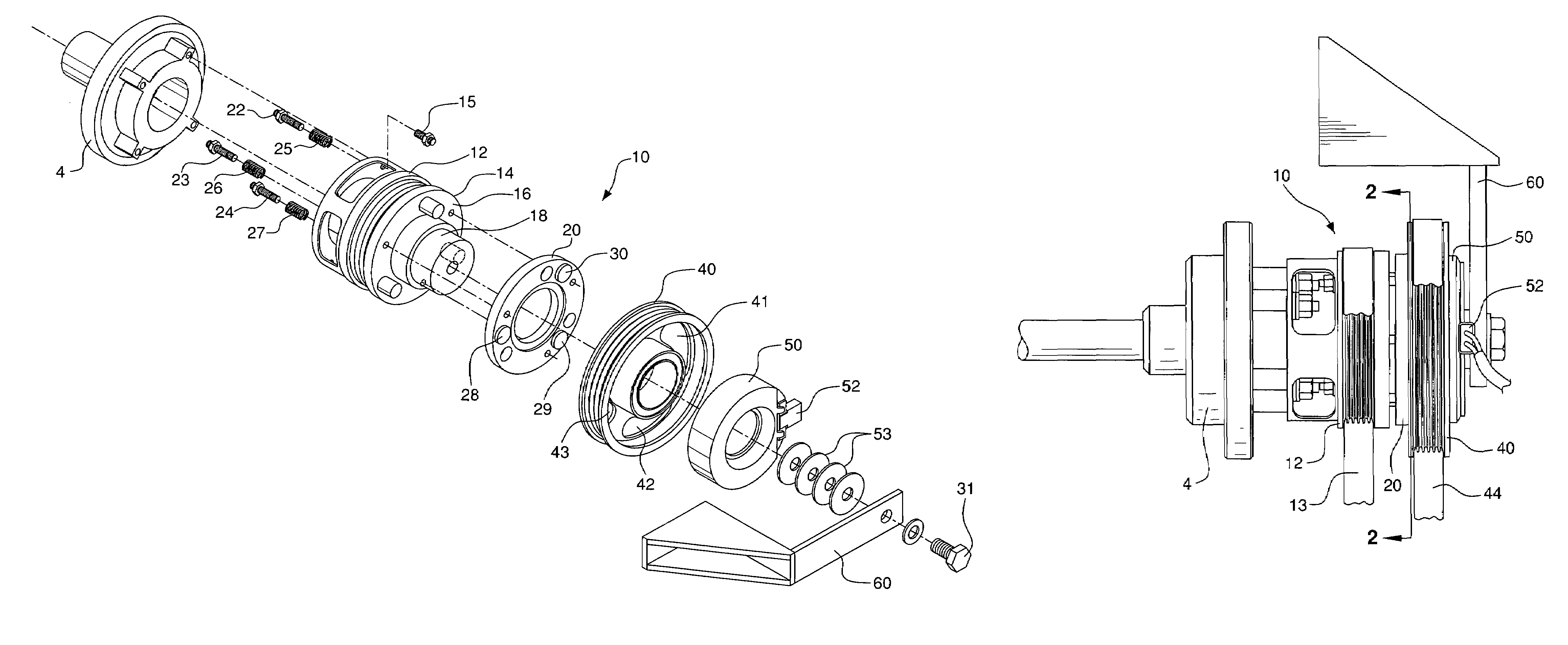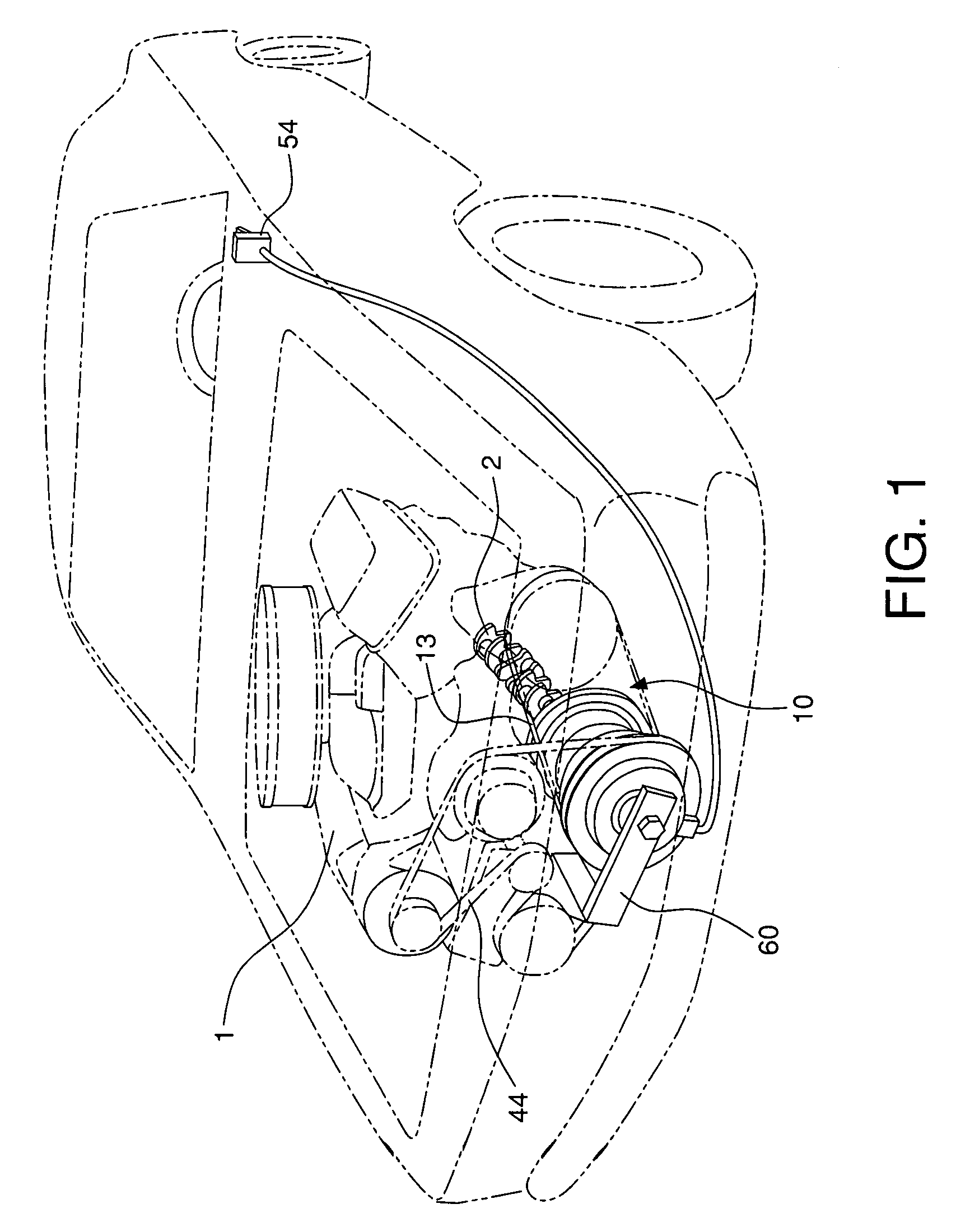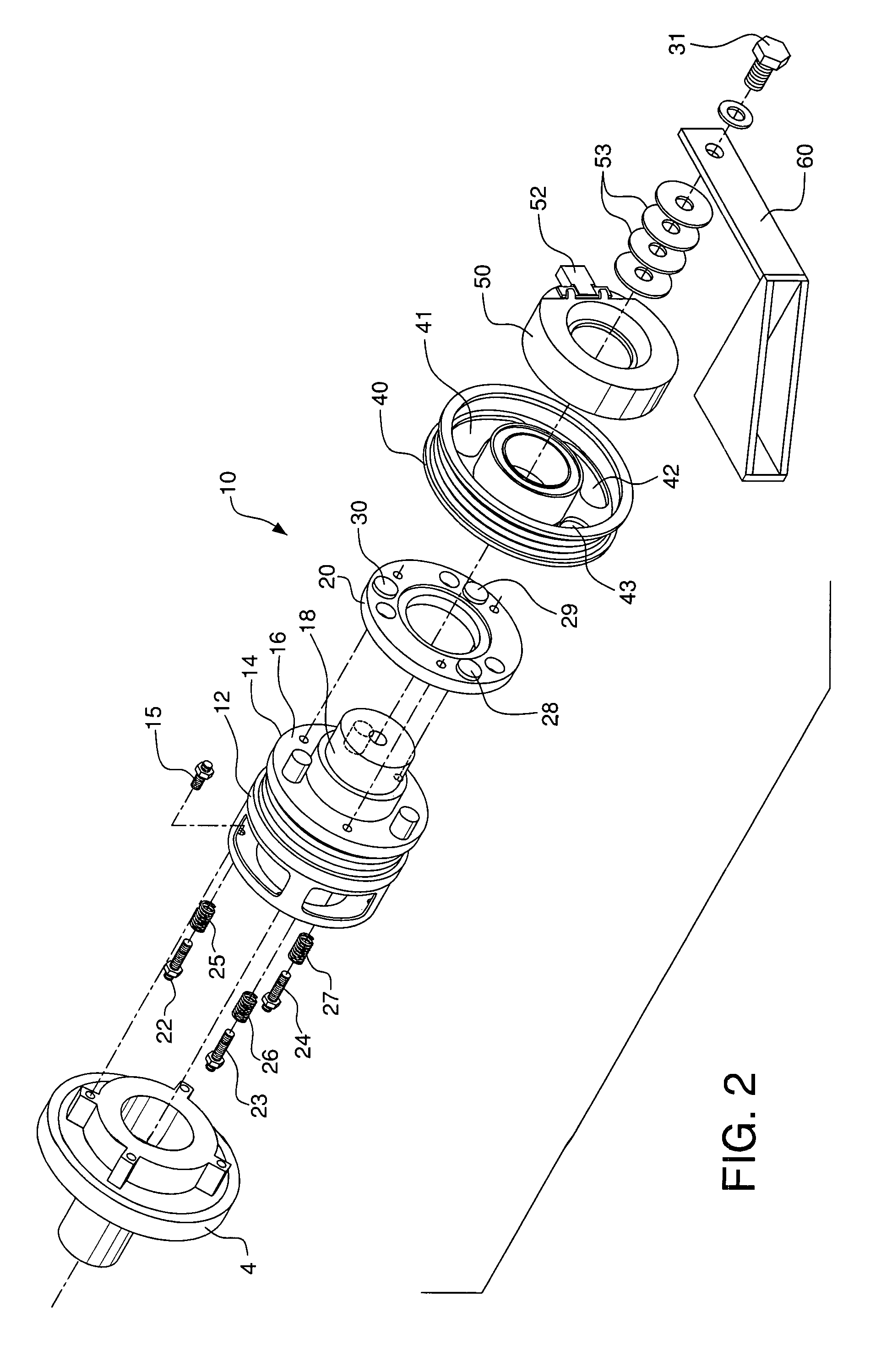Supercharger control system
a control system and supercharger technology, applied in the direction of interengaging clutches, gearing, hoisting equipment, etc., can solve the problems of increased fuel consumption, reduced engine efficiency, and engine work harder, so as to reduce engine exhaust emissions, high-speed engine performance, and increase fuel efficiency
- Summary
- Abstract
- Description
- Claims
- Application Information
AI Technical Summary
Benefits of technology
Problems solved by technology
Method used
Image
Examples
Embodiment Construction
[0021]Vehicle engine 1 comprises a standard crankshaft 2 connected at the bottom front of the engine to a common harmonic balancer unit 4 (not shown in FIG. 1). The other end of harmonic balancer 4 in turn is connected to the supercharger control system 10 of the present invention. Control system 10 comprises accessory crank pulley 12 which is connected, by bolts 15, to balancer 4. Power from engine 1 is transmitted from crankshaft 2, through balancer 4 to rotate accessory pulley 12. Belt 13 around accessory pulley 12 in turn rotates to operate the vehicle accessories. Accessory pulley 2 and its belt 13 are configured to rotate continuously while the engine is running.
[0022]Shaft element 14, which comprises connection plate 16 and shaft 18, is connected to the outboard end of accessory pulley 12. Shaft 18 is configured to be free spinning within accessory pulley 12. Interconnection means in the form of slide plate 20 is aligned substantially parallel to accessory pulley 12 and shaft...
PUM
 Login to View More
Login to View More Abstract
Description
Claims
Application Information
 Login to View More
Login to View More - R&D
- Intellectual Property
- Life Sciences
- Materials
- Tech Scout
- Unparalleled Data Quality
- Higher Quality Content
- 60% Fewer Hallucinations
Browse by: Latest US Patents, China's latest patents, Technical Efficacy Thesaurus, Application Domain, Technology Topic, Popular Technical Reports.
© 2025 PatSnap. All rights reserved.Legal|Privacy policy|Modern Slavery Act Transparency Statement|Sitemap|About US| Contact US: help@patsnap.com



